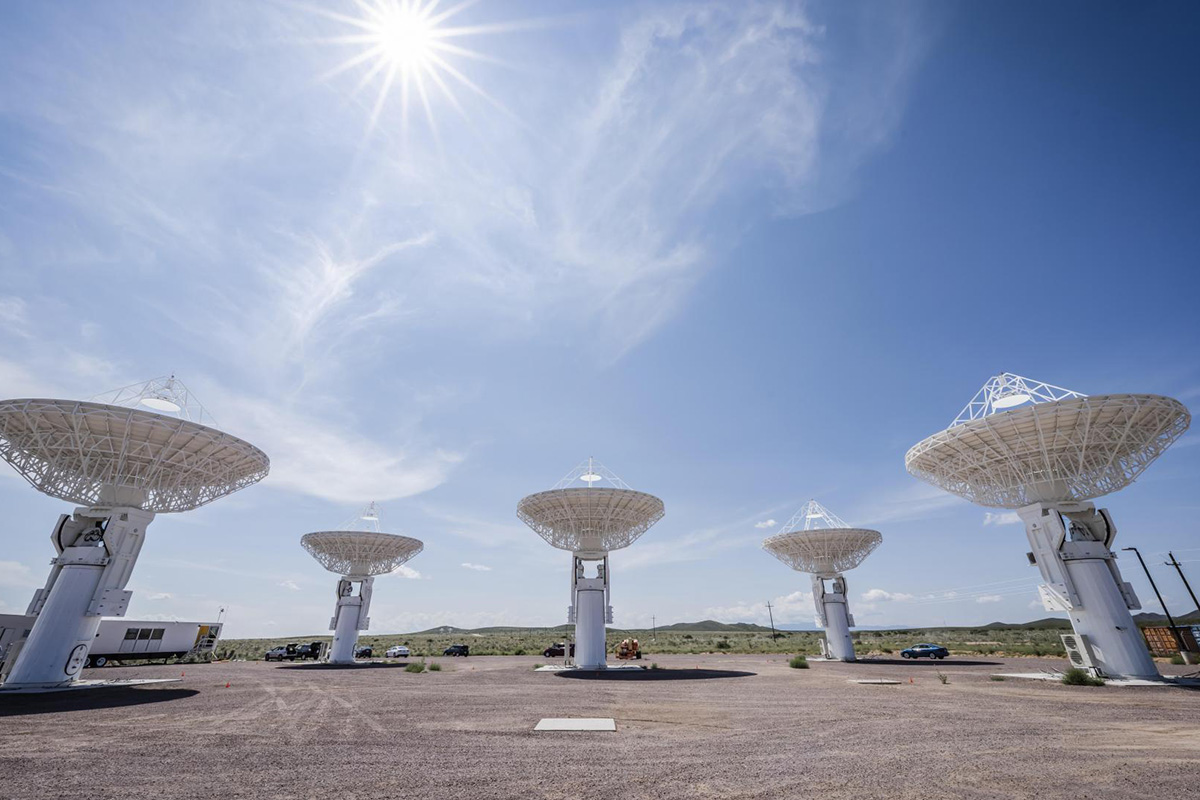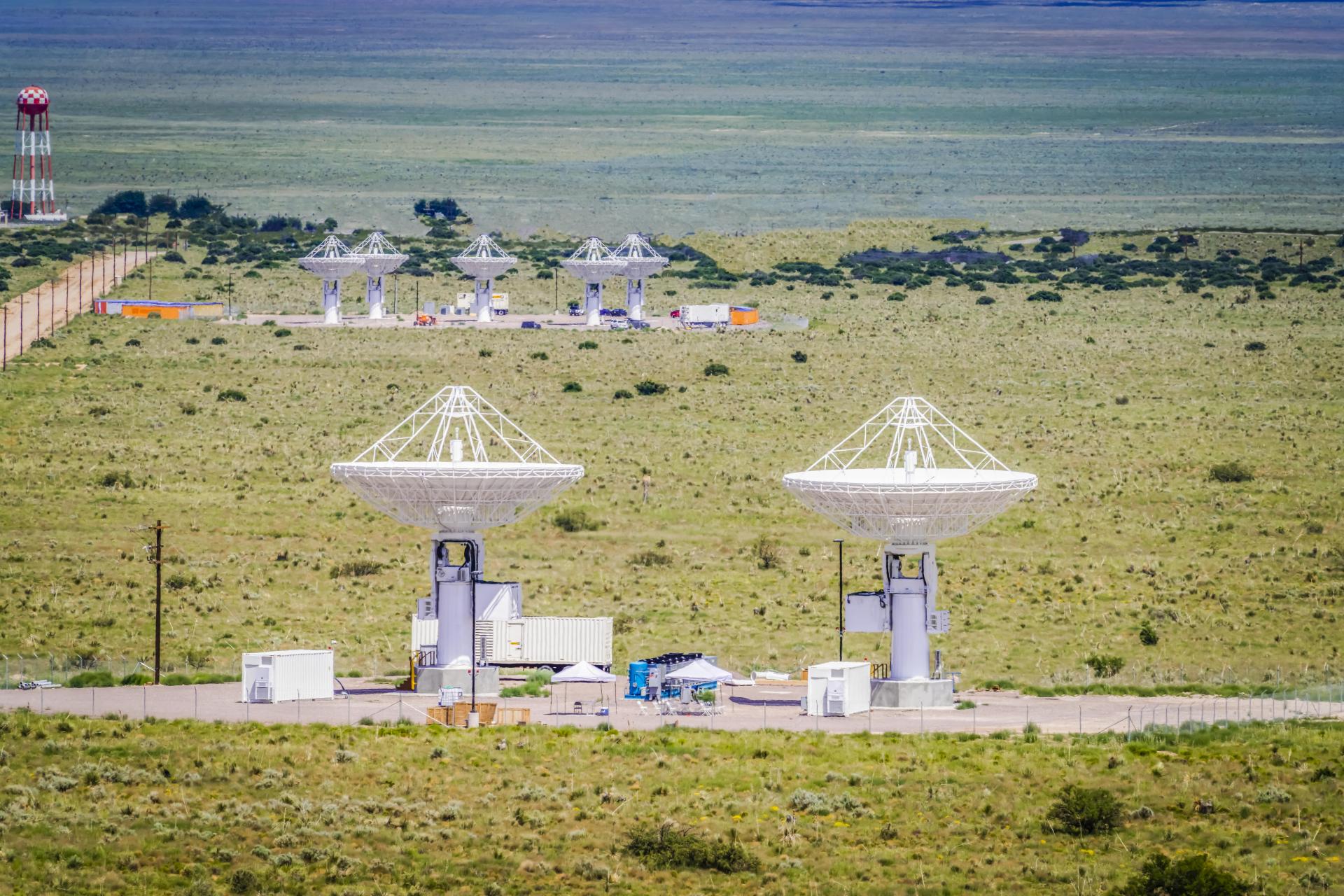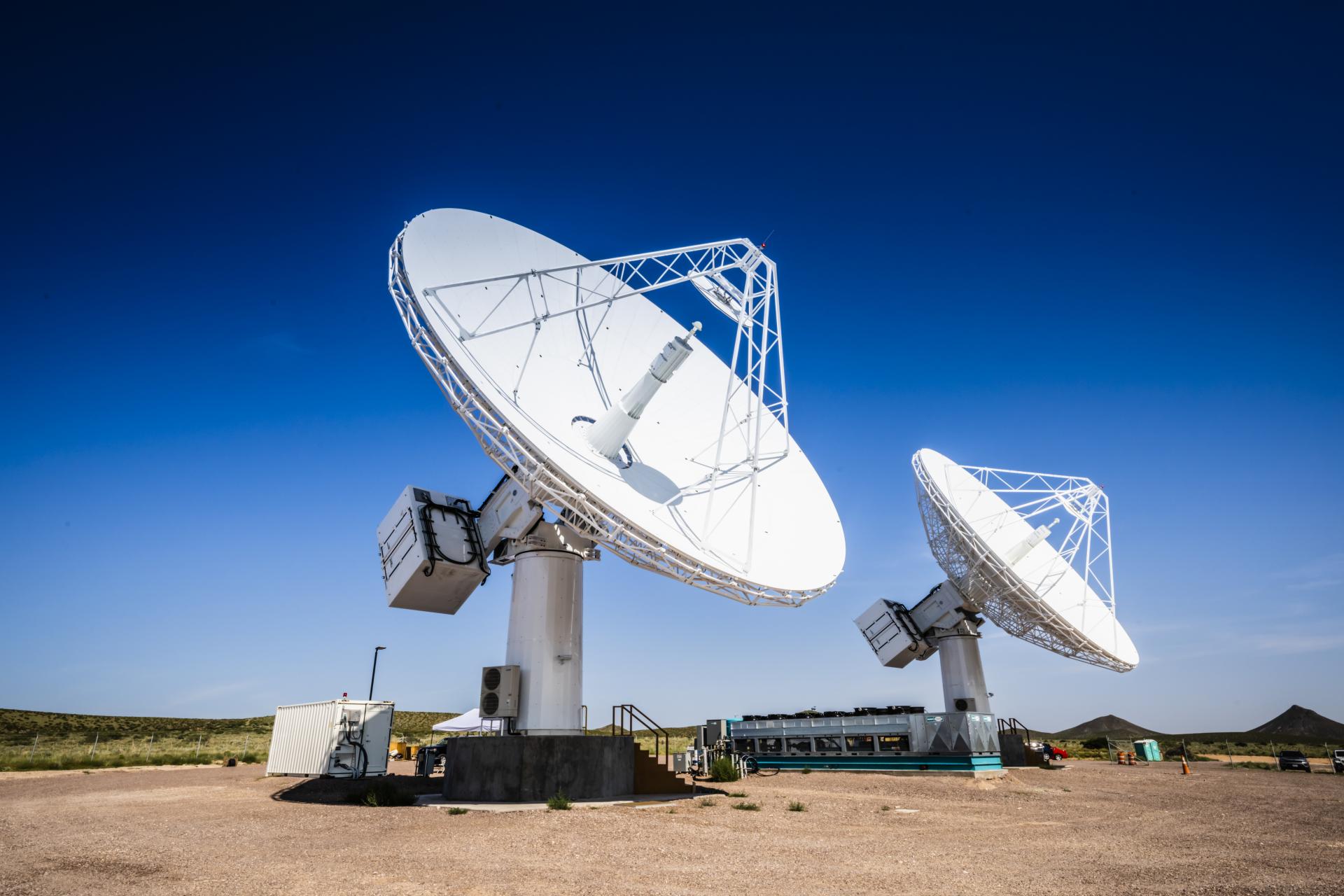Technology
DARC, which will become the largest-ever tracking radar system, will use APL-demonstrated technologies to detect small space objects or satellites quickly and with highly precise orbital information. If a collision threatens a satellite system, DARC will alert the operator in enough time for the satellite to maneuver away from the oncoming debris. DARC will also identify adversarial threats that have the potential to disrupt or deny civil and military space services.
The technology demonstrator, which uses a sparse array of dish antennas to track objects in space, was successfully tested at White Sands Missile Range, New Mexico, in late 2021. The test involved a sub-scale version of the envisioned system, complete with similar hardware, to demonstrate the ability to broadcast a signal at specific test objects in space. APL acted as design agent of the government reference architecture for the operational program. This effort is the result of nearly a decade of hard work and dedication by many APL professionals in collaboration with the U.S. Space Systems Command.
Results and Expectations
By leaning heavily on commercially available components, the APL design team reduced technical risk and validated the system’s design prior to the government implementing an operational radar system. The success of this test brought the U.S. Space Force one step closer to making this technology a reality for the warfighter and the nation.
The operational DARC calls for three high-powered transmit/receive sites, spaced at mid-latitudes around the world, to detect, track, and maintain custody of satellites. The initial contract includes the design, development, and delivery of a Site 1 system located in the Indo-Pacific region, expected to be completed in 2025. A follow-on will include two additional sites strategically placed around the world. Northrop Grumman Corporation is contracted to develop, test, and deliver the first DARC operational site. The system will leverage technologies from subcontractors, including a software solution for optimized sensor planning and scheduling for space situational and domain awareness. When the Space Force establishes a fully operational system based on the APL blueprint, the nation will have the foundation for a critical capability for the defense of space — an around-the-clock capability to better monitor potential threats, communications, and other satellites in geosynchronous Earth orbit.
Mission Facts
Successfully demonstrated
2021



